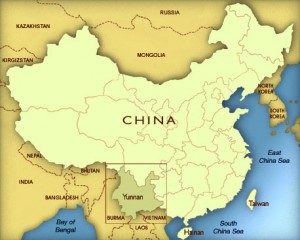Naxi, 纳西, refers to the ethnic minority group living in Lijiang Naxi Autonomous Country in the Yunnan Province in the southwest of China. Although most of the community lives in Lijiang, the rest are dispersed in the Weixi, Zhongdian, Ninglan, Deqin, Yongsheng, Heqing, Jianchuan and Lamping counties of the Yunnan province and the Yanyuan, Yanbian, and Muli counties in the Sichuan Province. The population of the Naxi minority is approximately 308, 839.

These counties have a “complicated terrain. There are cold mountainous areas, uplands, basins, rivers, and valleys, average 2,700 meters above sea level.” Therefore, the terrain is suitable for crops like “rice, maize, wheat, potatoes, beans, hemp and cotton.” The main profession of the community is agriculture.
Their common language is of the Chinese-Tibetan family. The Naxi people created a language of “pictographic characters, referred to as the “Dongba” script, and a syllabic writing, referred to as the “Geba script”. Due to the difficulty of the language, the government helped the Naxi community develop an alphabetic script. Thus, increasing relations between the Naxi people and other Chinese communities.
In terms of customs, women wear “wide-sleeved loose gowns, with jackets and long  trousers, tied with richly decorated belts at the waist. They often wear sheepskin slung
trousers, tied with richly decorated belts at the waist. They often wear sheepskin slung
over their shoulder, on which are seven stars exquisitely embroidered, with sun and moon symbols, one on each side.” These symbols illustrate the Naxi’s commitment to diligence. Men’s clothing is similar to that of the Han people. Celebrated traditions are the “Farm- Tool Fair, God of the Rain Festival, Mule and Horse Fair, Lunar New Year, Pure Brightness Festival, Dragon Boat Festival, Mid- Autumn Festival, and the Torch Festival.”
Citations
http://www.china.org.cn/e-groups/shaoshu/shao-2-naxi.htm
Images
http://133pounds.com/tag/fulbright/
Thanks, this is a good start on the topic. I’ll try to remember to bring in a book in the Naxi script! – I do have pictures from the region, too.
So who lives around / amongst the Naxi? How do they fare relative to others?
Are the Naxi similar in this to other minorities? and how big are minorities? Given Hessler, for example, how many Mongolians are there in China? [Hint: the China Statistical Yearbook has a table, so easy to check!]
More generally, what challenges do minorities face in China? how do these differ from the challenges faced by minorities in the US?
One issue that I found that the Naxi face is essentially an identity crisis. While the government’s support of minorities has positive intentions, it creates conflict within the Naxi people. Whether an individual identifies as Chinese or as Naxi can create conflict within the group. I’m sure that this is not an issue exclusive to the Naxi. This definitely an issue that minority groups face in the U.S, as well.
http://web.uri.edu/iaics/files/03-D.-Ray-Heisey.pdf
Considering 90% of Chinese are Han, minorities in China face far different challenges than minorities in the US. In the US, civil rights action has made everyone equal by law. And foreign minority citizens tend to assimilate when they come to the US. But in China–where there are over 50 types of ethnic minorities, minority groups tend to live with each other without associating with the dominant Han. This leaves the minority groups behind when economic development takes place.
Here’s a link to photos from Zhongdian, centered around a public market and a wholesale market for a prized variety of mushrooms. Some of the participants are Naxi, all are lamaist buddhist. The Songzanlin was under construction, what had been there before was destroyed in the Cultural Revolution. It is now completed, no idea whether it is larger than what was there before.
Zhongdian (香格里拉). See also this picture from a village near Lijiang (丽江). Corn is the staple crop, not rice not wheat.
Minorities are often forgotten about. They are important to explore, however, given the cultural environment that Patrick discussed in his comment: 90% of Chinese are Han. It is interesting to note the fundamental differences between the Naxi and Han. Even the staple crops are different – corn vs rice or wheat. This existence of separation of cultures does make some sense since geographically, Yunnan Province is located on the border of the large nation of China.
The government’s recognition of the differences is somewhat helpful though; it is beneficial of the government to promote interaction between the peoples through the Naxi’s language reform. In the future, it may be necessary to attempt to further integrate the peoples of China in order to create a more homogeneous nation.
There are 56 different ethnic groups in China. Different dress code, eating habits, and believes have long been a problem among Han (汉族) people and other minorities. Balancing out these conflicts and figure out a different type of economic systems are important for Chinese government.
As Rainy said, although China is mainly dominated by Han Chinese, there are so many different ethnic groups throughout China with their own unique history. I think its a very unique subject that many foreigners do not understand as many people in America simply generalize Chinese as Asians as a whole and don’t think about different demographics and ethnic groups and their problems in Chinese society.